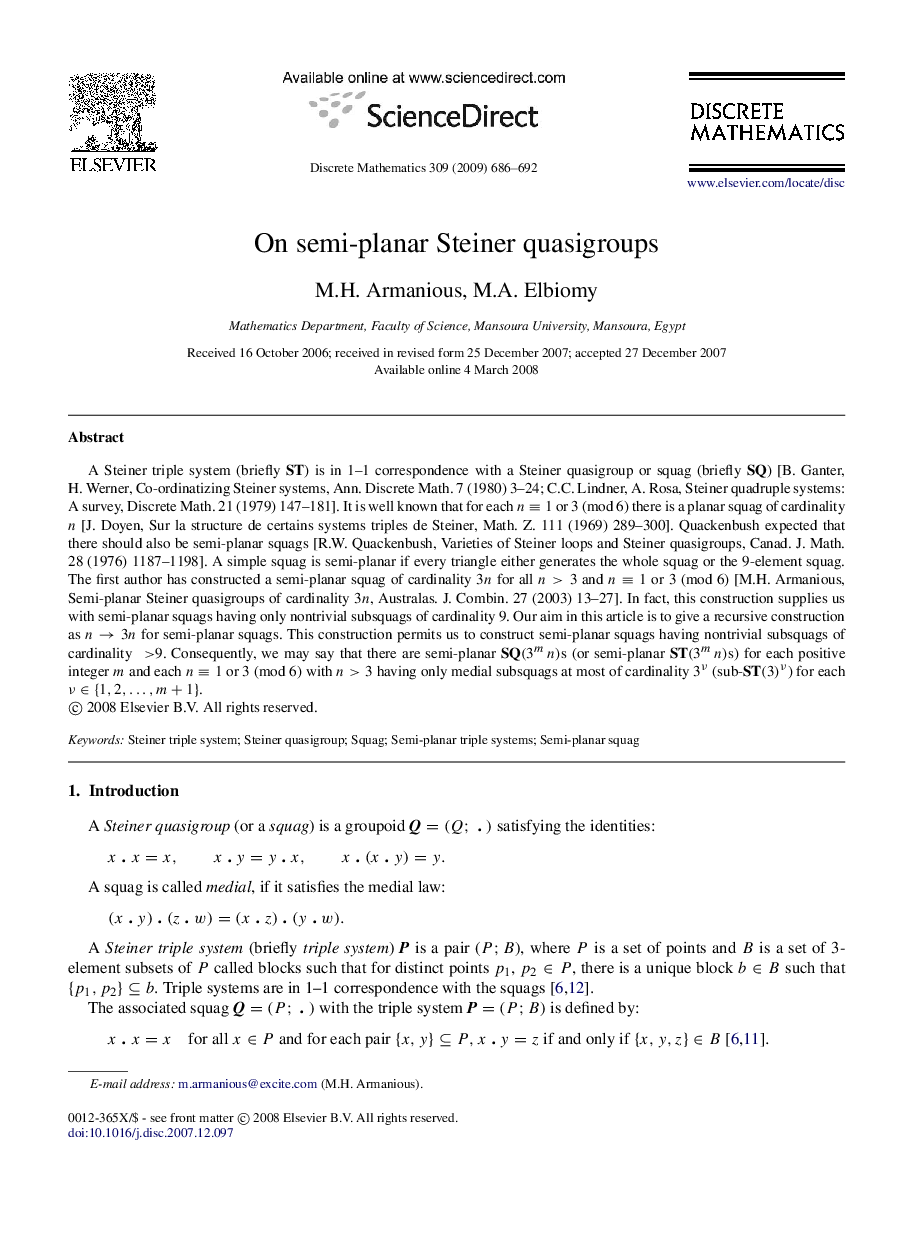| Article ID | Journal | Published Year | Pages | File Type |
|---|---|---|---|---|
| 4650140 | Discrete Mathematics | 2009 | 7 Pages |
A Steiner triple system (briefly ST) is in 1–1 correspondence with a Steiner quasigroup or squag (briefly SQ) [B. Ganter, H. Werner, Co-ordinatizing Steiner systems, Ann. Discrete Math. 7 (1980) 3–24; C.C. Lindner, A. Rosa, Steiner quadruple systems: A survey, Discrete Math. 21 (1979) 147–181]. It is well known that for each n≡1n≡1 or 3 (mod 6) there is a planar squag of cardinality nn [J. Doyen, Sur la structure de certains systems triples de Steiner, Math. Z. 111 (1969) 289–300]. Quackenbush expected that there should also be semi-planar squags [R.W. Quackenbush, Varieties of Steiner loops and Steiner quasigroups, Canad. J. Math. 28 (1976) 1187–1198]. A simple squag is semi-planar if every triangle either generates the whole squag or the 9-element squag. The first author has constructed a semi-planar squag of cardinality 3n3n for all n>3n>3 and n≡1n≡1 or 3 (mod 6) [M.H. Armanious, Semi-planar Steiner quasigroups of cardinality 3nn, Australas. J. Combin. 27 (2003) 13–27]. In fact, this construction supplies us with semi-planar squags having only nontrivial subsquags of cardinality 9. Our aim in this article is to give a recursive construction as n→3nn→3n for semi-planar squags. This construction permits us to construct semi-planar squags having nontrivial subsquags of cardinality >9. Consequently, we may say that there are semi-planar SQ(3mn)s (or semi-planar ST(3mn)s) for each positive integer mm and each n≡1n≡1 or 3 (mod 6) with n>3n>3 having only medial subsquags at most of cardinality 3ν3ν (sub-ST(3)ν) for each ν∈{1,2,…,m+1}ν∈{1,2,…,m+1}.
